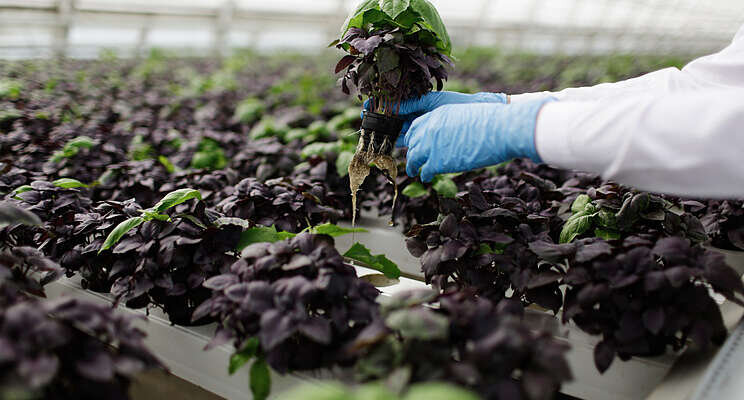Is vertical, soilless farming the future of food?
Added on 02 June 2022

Similar to hydroponic farming, the aquaponic grow method used by Balance Farms foregoes soil in favor of growing plants in water.
Like other clean, fast-casual concepts, the menu at Ohio-based, Asian-fusion chain Balance Grille is largely veggie-forward. But rather than sourcing all produce from outside suppliers, the four-unit brand offers fresh, local items courtesy of its own green thumb. Thanks to a nearby 8,600-square-foot, vertical, aquaponics farm owned by the concept, much of the brand's produce is grown by Balance Grille itself.
"The farm is right in [Toledo, Ohio's] central business district," says Balance Grille co-founder Prakash Karamchandani. "We went into a strip of retail that was essentially abandoned in the heart of our downtown area. By putting in a farm and a restaurant, we were able to revitalize an entire city block."
Balance Grille's menu includes bubble teas and veg-heavy snacks, but is anchored by customizable bowls and tacos, all of which rely heavily on produce. Balance Farms is able to help fill the brand's need for fresh veg. The farm produces a variety of crops within a controlled-environment, aquaponic grow space, allowing the brand to source much of its greens, herbs, and other ingredients from its own farm.
Similar to hydroponic farming, the aquaponic grow method used by Balance Farms foregoes soil in favor of growing plants in water. But instead of using formulated nutrient solutions to feed its plants (as is the practice in hydroponic farming), the aquaponic system locates plants in the same water as live fish, with the fish providing the crops with a constant source of nutrients.
Continue reading.
Photo created by wayhomestudio - www.freepik.com
Source: Qsr Magazine
More news















